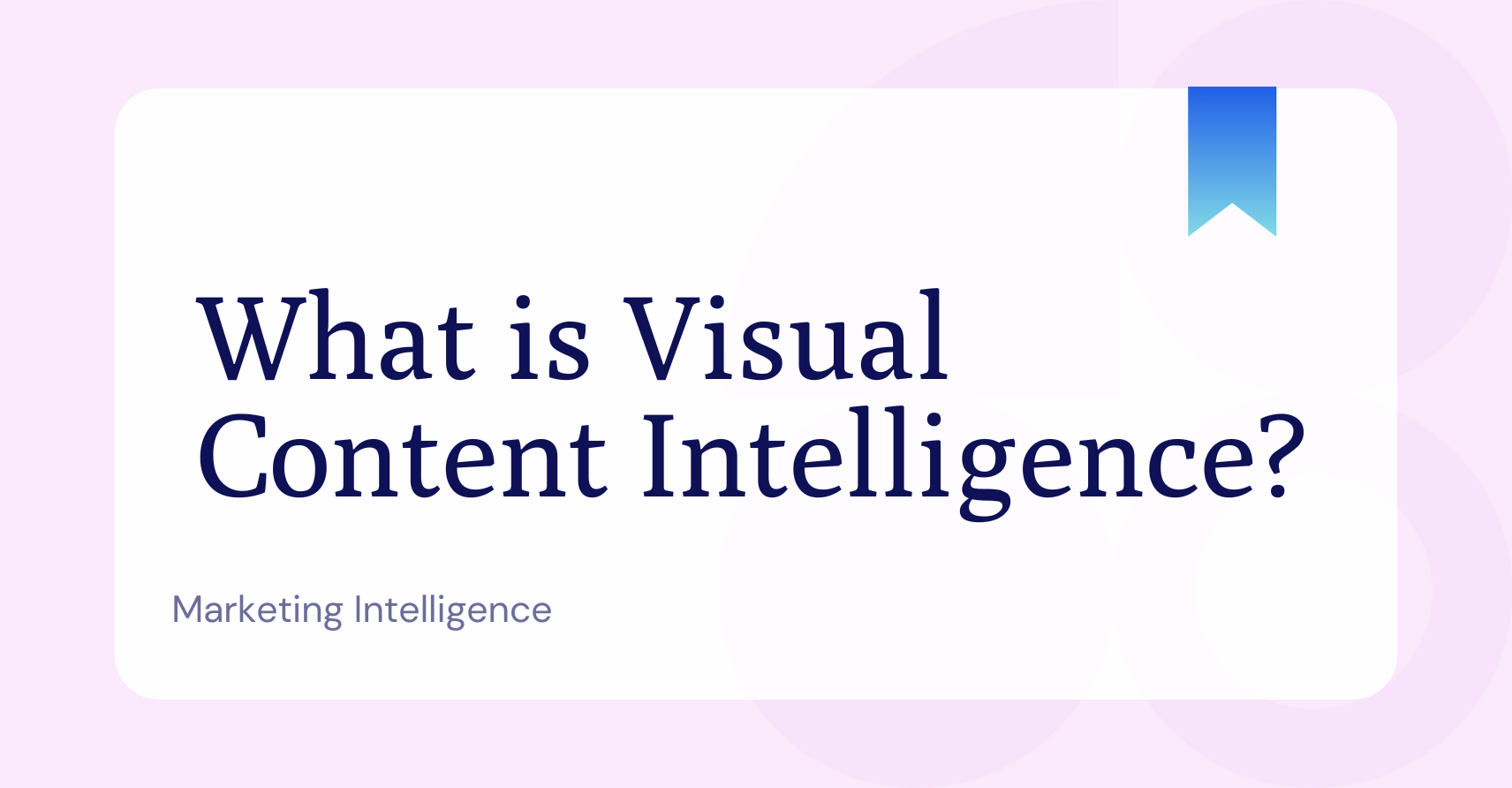Visual content intelligence is the practice of analyzing how visual elements-such as videos, website graphics, banners, infographics, and social media images-impact audience behaviour, engagement, and decision-making. It enables marketers to measure which visual assets drive results and why.
For B2B marketing teams, it's about understanding what creative content makes buyers stop scrolling, clicking, or converting on any channel, from LinkedIn posts to website landing pages.
Why does visual content matter in B2B?
B2B buyers make complex decisions, but that doesn't mean they're immune to great design. The way you present information visually can either build trust, create engagement, spark curiosity, induce indifference, or cause confusion.
Visual content often sets the first impression. Whether it's a website banner, a product demo video, or a social media graphic, it communicates brand identity, clarity, and value faster than words can.
Marketers who use visual content intelligence can:
-
Identify which visuals increase time on site or form fills.
-
Improve click-through rates on paid banners or email campaigns.
-
Discover visual trends that appeal to specific industries or job roles.
-
Optimize designs for different platforms and devices.
What types of content fall under the category of visual content intelligence?
Visual content intelligence spans nearly every medium your team produces:
Videos
-
Explainer videos
-
Customer testimonials
-
Product walkthroughs
-
Thought leadership clips
Track views, drop-off points, engagement rate, and even viewer demographics.
Banners
-
Display ads
-
Sponsored social posts
-
Website hero graphics
A/B test different designs, CTA placements, and messaging styles to discover what works best.
Websites and landing pages
-
Visual hierarchy (e.g., image size, layout spacing)
-
Use of colour and icons
-
Responsiveness across devices
Heatmaps, scroll depth, and time-on-page offer clues into how visuals influence conversion.
Social media and blog imagery
-
Carousel posts
-
Quote graphics
-
Branded imagery or memes
Analyse engagement patterns to refine which types of visuals perform best on specific platforms.
What does visual content intelligence look like in practice?
Let's look at a few B2B scenarios:
-
A marketing team has noticed that testimonial videos with subtitles receive 30% more engagement. They begin captioning all videos by default.
-
A/B testing reveals that blue-coloured CTAs on white background banners yield more clicks. The team updates its design guidelines accordingly.
-
Heatmap data reveals that users are skipping over large hero banners on landing pages. The creative team adjusts layouts to move key content higher up.
In all cases, data about visual performance leads to better creative decisions.
What tools help gather visual content insights?
You don't need heavy-duty analytics tools to start using visual content intelligence. Most insights come from platforms you already use:
-
Social platforms, including LinkedIn, Twitter, and Instagram, provide post-performance insights at a visual level.
-
Website tools, such as Google Analytics, Hotjar, or Microsoft Clarity, reveal how visuals impact web engagement.
-
Email platforms: Track how banner design affects open rates and click-throughs.
-
Marketing automation platforms offer reporting on the performance of visual assets across campaigns.
-
Video platforms, such as YouTube or Vimeo, provide analytics that highlight drop-off points and watch time.
The key is to consistently review visual performance and iterate based on the learnings.
Why is visual content intelligence essential for B2B?
B2B audiences are bombarded with information-emails, whitepapers, webinars, and more. But compelling visuals still stand out. They simplify complexity, create emotional impact, and improve information retention.
Visual content intelligence helps marketers:
-
Justify creative decisions with data.
-
Align brand and performance goals.
-
Save time by focusing on assets that work.
-
Create campaigns tailored for each stage of the buyer's journey.
What's the difference between visual content intelligence and visual analytics?
They sound similar but serve different purposes.
-
Visual content intelligence focuses on the content itself-what's in the image or video and how it performs.
-
Visual analytics often refers to data dashboards or visualization tools rather than the creative content that drives them.
Think of visual content intelligence as answering:
"What type of visual is most effective for our audience and goals?"
How is visual content intelligence used on LinkedIn?
LinkedIn is a core channel for B2B, and visual content intelligence plays a crucial role in campaign optimization:
-
Video posts: See which videos get watched, liked, or shared by which job titles.
-
Sponsored banners: Test different creatives for awareness vs. lead gen objectives.
-
Carousel posts: Understand where people drop off or engage across slides.
-
Profile and page visuals: Measure the impact of branded headers or cover images on profile views and clicks.
Many B2B teams utilize LinkedIn's analytics in conjunction with content management platforms to gain a comprehensive view.
Who benefits from visual content intelligence?
Target Audience:
This glossary entry is built for B2B marketers, brand managers, content strategists, social media professionals, and design teams who want to ensure that every image, video, or banner they create delivers measurable value.
Summary: Visual content intelligence
Visual content intelligence helps B2B marketers understand what makes visuals work-from banners and website graphics to videos and infographics. It replaces "let's try this design and hope for the best" with strategic, data-backed decisions.
By combining creativity with analytics, marketers can enhance engagement, strengthen their brand, and achieve better business outcomes-one visual at a time.
